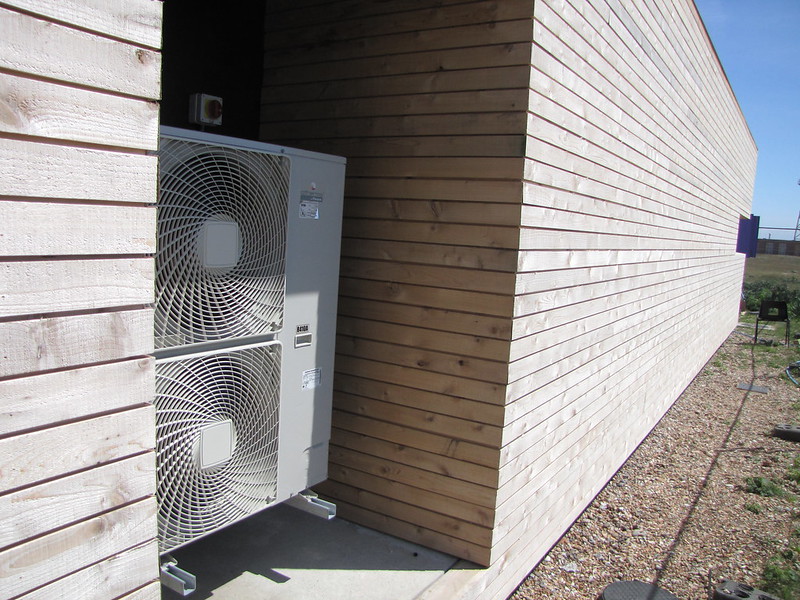The airflow within an air source heat pump is not constant and can be affected by various factors such as the size of the system, the design of the ductwork, and the presence of any restrictions or blockages in the airflow path. The amount of airflow can have a significant impact on the performance and efficiency of the heat pump.
Understanding Airflow Requirements
According to the Department of Energy, the airflow for each ton of the heat pump’s air-conditioning capacity should be between 400 and 500 cubic feet per minute (cfm). If the airflow is much less than 350 cfm per ton, the efficiency and performance of the heat pump will deteriorate. Technicians can increase the airflow by cleaning the evaporator coil or increasing the fan speed, but often some modification of the ductwork is needed.
Factors Affecting Airflow
-
System Size: The size of the air source heat pump system can significantly impact the airflow. Larger systems typically require higher airflow to maintain optimal performance.
-
Ductwork Design: The design and layout of the ductwork can affect the airflow within the system. Poorly designed or restrictive ductwork can lead to reduced airflow.
-
Blockages and Restrictions: Any obstructions or restrictions in the airflow path, such as clogged air filters, dirty coils, or damaged ductwork, can reduce the overall airflow.
-
Fan Speed: The speed of the fan in the air source heat pump can be adjusted to increase or decrease the airflow. Higher fan speeds can increase airflow, but may also result in higher energy consumption.
-
Ambient Conditions: Environmental factors, such as temperature and humidity, can also influence the airflow within the system. Extreme temperatures or high humidity levels can affect the air density and impact the airflow.
Consequences of Improper Airflow
Restricted airflow can lead to various operational problems and require specific solutions. One common issue is that the air filter may become clogged, reducing the amount of air passing through it. This can cause the system to overheat, decreasing efficiency and increasing energy costs. If the air filter is not replaced regularly, dirt and debris can accumulate in other parts of the system, such as the evaporator coil or condenser coil. This build-up can reduce airflow even further and cause additional damage to components.
Potential Issues Due to Improper Airflow
-
Reduced Efficiency: Insufficient airflow can decrease the heat pump’s efficiency, leading to higher energy consumption and increased operating costs.
-
Overheating: Restricted airflow can cause the system to overheat, leading to potential component damage and reduced lifespan.
-
Icing and Frost Buildup: Inadequate airflow can result in icing or frost buildup on the coils, further reducing the system’s efficiency and performance.
-
Compressor Damage: Severely restricted airflow can cause the compressor to work harder, leading to premature wear and potential failure.
-
Increased Noise: Airflow issues can result in increased noise levels from the system, as the fan and other components struggle to maintain proper airflow.
Maintaining Proper Airflow
To ensure that the airflow within an air source heat pump is sufficient and not restricted, regular maintenance is crucial. This includes:
-
Checking and Replacing Air Filters: Air filters should be checked and replaced regularly to prevent clogging and maintain optimal airflow.
-
Cleaning Coils: The evaporator and condenser coils should be cleaned periodically to remove any buildup of dirt and debris that can restrict airflow.
-
Ductwork Inspection and Repair: The ductwork should be inspected for any leaks, blockages, or restrictions, and any necessary repairs should be made to maintain proper airflow.
-
Fan Speed Adjustment: If necessary, the fan speed can be adjusted to increase or decrease the airflow to match the system’s requirements.
-
System Balancing: A professional HVAC technician can perform a system balancing procedure to ensure that the airflow is distributed evenly throughout the ductwork and that the system is operating at its optimal efficiency.
By following these maintenance practices, you can help ensure that the airflow within your air source heat pump remains sufficient and that the system continues to operate efficiently and effectively.
Conclusion
In summary, the airflow within an air source heat pump is not constant and can be affected by various factors, including system size, ductwork design, and the presence of any restrictions or blockages. Maintaining proper airflow is crucial for the efficient and effective operation of the heat pump, and regular maintenance, such as checking and replacing air filters, cleaning coils, and inspecting the ductwork, can help prevent issues and ensure optimal performance.

